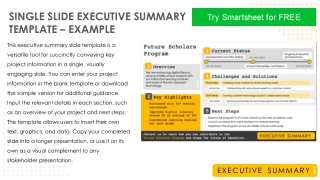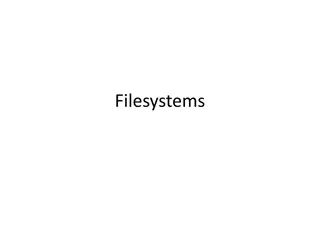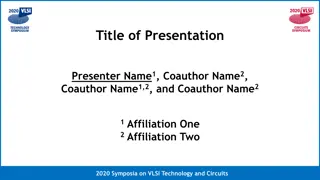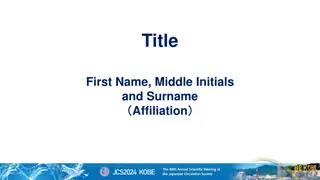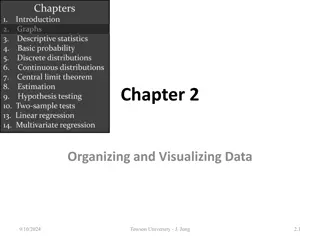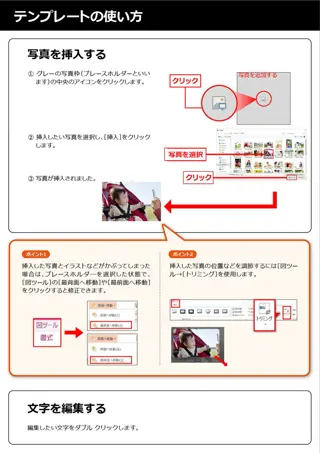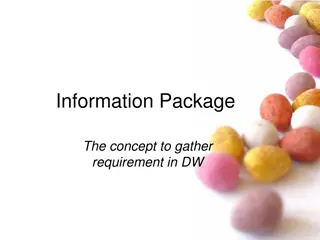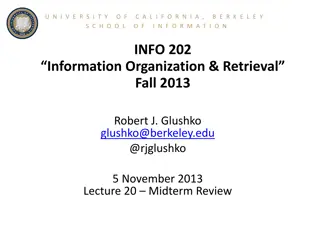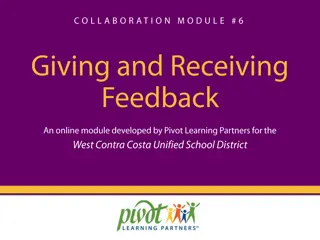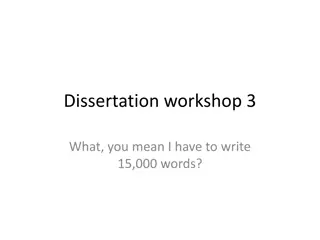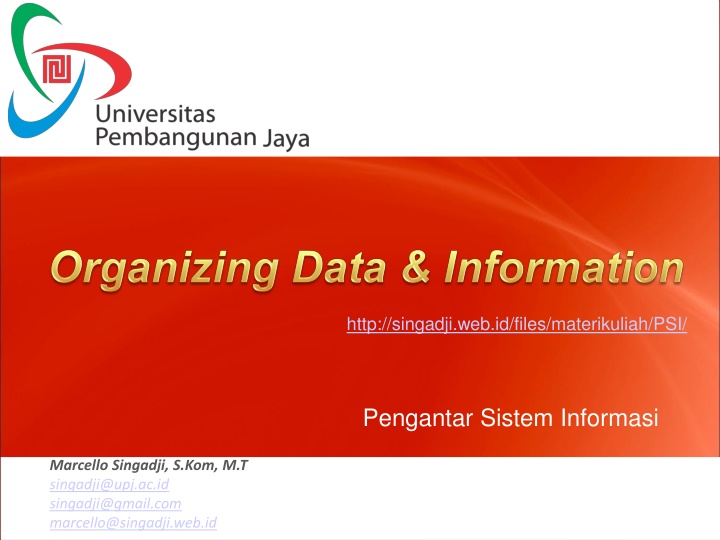
Database Management Concepts and Advantages Explained
Learn about general data management concepts, three database models, common database functions, recent applications, hierarchy of data, keys and attributes, traditional vs. database approach to data management, and the advantages of the database approach. Understand the importance of data integrity, accessibility, protection, and efficiency in managing corporate data effectively.
Uploaded on | 1 Views
Download Presentation

Please find below an Image/Link to download the presentation.
The content on the website is provided AS IS for your information and personal use only. It may not be sold, licensed, or shared on other websites without obtaining consent from the author. If you encounter any issues during the download, it is possible that the publisher has removed the file from their server.
You are allowed to download the files provided on this website for personal or commercial use, subject to the condition that they are used lawfully. All files are the property of their respective owners.
The content on the website is provided AS IS for your information and personal use only. It may not be sold, licensed, or shared on other websites without obtaining consent from the author.
E N D
Presentation Transcript
http://singadji.web.id/files/materikuliah/PSI/ Pengantar Sistem Informasi Marcello Singadji, S.Kom, M.T singadji@upj.ac.id singadji@gmail.com marcello@singadji.web.id
Learning Objectives Define general data management concepts and terms, highlighting the advantages and disadvantages of the database approach to data management. Name three database models and outline their basic features, advantages, and disadvantages. Identify the common functions performed by all database management systems and identify three popular end-user database management systems. Identify and briefly discuss recent database applications.
Date entries, attributes & keys Entity: Generalized class of people, places, systems for which data is collected. (Ex. Employees, customers) Attribute: Characteristic of an entity (Ex. First name, last name) Key: A set of fields used to identify an entity Primary Key: A key that uniquely identified the entity
The Traditional Approach To Data Management Create new files for each application Data redundancy Data integrity
The Database Approach to Data Management
Advantages of the Database Approach (1) Improved strategic use of corporate date Accurate information always available Reduced data redundancy Data is stored in one place Improved data integrity Changes are reflected throughout Easier modification and update No need to know where the data is Data and program independence Accurate information always available
Advantages of the Database Approach (2) Better access to data and information Simple instructions to access data Standardization of data access Each DBMS uses the same set of instructions Standardization for programmers Should only know how to access the DBMS Better protection of data Require authorization on the data Shared data resources Setup the database once Several applications can use it
Disadvantages of the Database Approach Costly Specialized DBMS software Specialized DBMS administrators and operators Increased vulnerability Single point of failure Targets for attacks
Data Modeling Planned data redundancy To have it available in more than one place To improve system performance Data model A diagram of entities and their relationships Enterprise data modeling Done at the level of enterprise Entity-relationship diagrams Use graphs to show how data is organized and how it is related
Entity-Relationship Diagram for a Customer Ordering Database Entity Relationship (one-to-many) Relationship (many-to-one) Relationship (one-to-one)
Database Models Hierarchical (tree) Data is organized top-down Network Owner-membership relationship A member can have many owners Relational Uses tabular format with 2-dimensional tables (relations) Relations resemble files
Relational Database Model Project table Department table Manager table
Relational Models Describe data using a standard tabular format with all data elements placed in two-dimensional tables, called relations, that are the logical equivalent of files. Rows represent data entity Columns represent attributes
Providing a User View Schema - a description of the entire database First create a schema, then create the tables Subschema - a file that contains a description of a subset of the database and identifies which users can modify the data items in that subset A sales representative has to see the data for her office, not the company stock data
The Use of Schemas and Subschemas
Data Access Concurrency control: Lock the record so that only one application can access it at a time Data manipulation language (DML) Structured Query Language (SQL) SELECT * FROM Project WHERE Project_number= 155 UPDATE Project SET Project_number= 156 WHERE Project_number= 155
Popular Database Management Systems Oracle MySQL Paradox database FileMaker Pro Microsoft Access Lotus 1-2-3 Spreadsheet
Selecting a Database Management System (1) Database size: Number of records in the database Number of concurrent users: People or applications that will access it at the same time Performance: How fast can the DBMS access or update records? Integration: Which operating system can it run under? Features: Which security procedures or privacy policies are in place? Vendor: Size and reputation of the vendor Cost: Initial cost, maintenance costs, hardware costs, personnel costs
Data Warehouses, Data Marts, and Data Mining Data Warehouse - a database that collects business information from many sources in the enterprise, covering all aspects of the company s processes, products, and customers. Data Mart a subset of a data warehouse. For small and medium size businesses Used mostly for decision support system Data Mining - an information analysis tool that involves the automated discovery of patterns and relationships in a data warehouse.
Common Data Mining Applications Branding and positioning of products Customer churn Which customers can switch to competitors? Direct marketing Who would respond to telemarketing? Fraud detection Predict transactions which are likely to be illegal
Common Data Mining Applications Market-based analysis Which products are bought at the same time (diaper, beer, chips) Market segmentation Group users based on similarity of products that they buy Trend analysis Analyze how variables change over time (e.g., sales)
Business Intelligence Gathering enough of the right information in a timely manner and usable form. Competitive intelligence What others are doing Counterintelligence Define trade secret information Knowledge management Capture company s collective expertise wherever it resides Record knowledge and share it
Object-Relational Database Management System Stores the following types of data as objects: audio images unstructured text spatial data
Summary Data - one of the most valuable resources a firm possesses. Entity - a generalized class of objects for which data is collected, stored, and maintained. Attribute - a characteristic of an entity. DBMS - a group of programs used as an interface between a database and application programs. Data mining - the automated discovery of patterns and relationships in a data warehouse.

